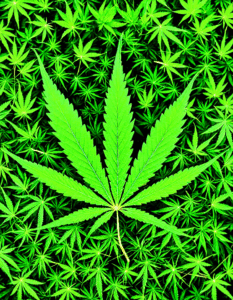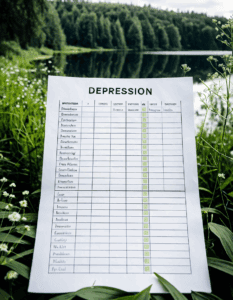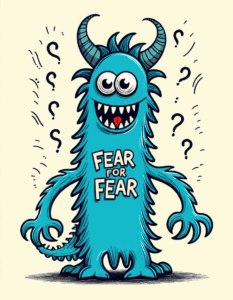Withdrawal Symptoms: Battling Anxiety and Hallucinations
Understanding Withdrawal Symptoms: An In-Depth Overview
Withdrawal symptoms are the physical and psychological effects experienced when a person abruptly reduces or discontinues their intake of a substance they have become dependent upon. These symptoms can range from mild to severe, but some of the most formidable challenges faced during withdrawal are anxiety and hallucinations. These withdrawal symptoms can be terrifying for both individuals going through them and their loved ones. The path to recovery is fraught with hurdles, and it’s important to understand what these symptoms entail and how to manage them.
The impact of withdrawal symptoms should not be underestimated. Whether it’s opioid withdrawal, alcohol detox, or quitting stimulants, each substance presents its unique set of challenges. Our mission at Mothers Against addiction is to assist parents in navigating this treacherous terrain, providing them with tools, resources, and support to help their children and cope with their own grief and stress.
| Category | Symptoms/Behaviors | Description |
| Physical Withdrawal Symptoms | Tremors/Shakes, Sweating, Fatigue, Nausea/Vomiting, Muscle Pain, Headaches, Flu-like Symptoms | Physical manifestations that occur as the body reacts to the absence of the addictive substance. |
| Psychological Withdrawal Symptoms | Depression, Anxiety, Reduced Motivation, Anhedonia (difficulties experiencing pleasure), Apathy, Hallucinations, Delusions | Mental and emotional challenges that emerge during withdrawal, significantly impacting one’s psychological state. |
| Unhealthy Coping Mechanisms for Withdrawal | Denial, Avoidance, Displacement | Maladaptive strategies used by individuals to manage or escape the discomfort of withdrawal symptoms. |
| Denial | Refusing to acknowledge the addiction | A common defense mechanism where the individual insists they do not have a problem despite clear evidence. |
| Avoidance | Returning to the addiction | Engaging in substance use again to evade the emotional and physical pain of withdrawal. |
| Displacement | Redirecting negative feelings | Channeling distress or frustration towards a less threatening target, rather than addressing the root issue. |
The Physiology of Withdrawal Symptoms
Understanding how withdrawal symptoms manifest requires a closer look at the physiological mechanisms at play. When the body becomes dependent on a substance, neural pathways and brain chemistry are altered. Abrupt cessation disrupts this new balance, leading to symptoms such as:
The sudden disruption of the body’s new “normal” can trigger a cascade of physical reactions. It’s like pulling the rug out from under a carefully balanced structure. This abrupt change overwhelms the body’s ability to cope, hence the intense withdrawal symptoms.
For more detailed information on how substance dependence affects the body, check out our comprehensive guide on substance dependence.
Anxiety During Withdrawal: A Closer Look
Anxiety is one of the most ubiquitous and debilitating withdrawal symptoms. It can manifest in various ways, severely impacting daily life and recovery. Understanding the different forms anxiety can take is crucial for effective management and treatment.
Case Study: Jennifer’s Battle with Opioid Withdrawal
Jennifer, a 34-year-old engineer from San Francisco, struggled with opioid addiction for five years before seeking help. During her detox, she experienced severe anxiety that required both pharmacological and therapeutic interventions. Her story is a testament to the importance of a multi-faceted treatment approach. Jennifer found solace through a combination of medically supervised detox, therapy, and support from family.
Jennifer’s experience underscores the need for a comprehensive plan. Ensuring that all aspects of a patient’s wellbeing are addressed—from physical symptoms to emotional support—greatly increases the chances of a successful recovery. For a more in-depth look at co-occurring disorders like anxiety and substance dependence, visit our page on Co-occurring Disorders.
Hallucinations During Withdrawal: Understanding the Nightmare
Hallucinations are sensory experiences that appear real but are created by the mind. During withdrawal, hallucinations can be particularly frightening, and they often require medical intervention. These false perceptions can occur due to different substances, including:
Case Study: Jim’s Experience with Alcohol Withdrawal
Jim, a 45-year-old teacher from Boston, faced severe visual hallucinations during his alcohol detox. He reported seeing spiders crawling on his skin—a terrifying and destabilizing experience that required hospitalization and intensive care. Jim’s case highlights the severity of withdrawal-induced hallucinations and the absolute necessity of professional medical supervision during detox.
Intrusive hallucinations not only create immediate danger but also complicate the recovery timeline. It’s essential to understand that supervising physicians can manage these symptoms with medications and other therapeutic interventions. For more insights on the top professionals in this field, you might find the top mortgage Brokers in 2014 had insights parallel to managing financial withdrawals, resonating with how medical professionals handle substance withdrawal.
Coping Strategies: Navigating Anxiety and Hallucinations
Managing withdrawal symptoms effectively, especially anxiety and hallucinations, requires a multi-pronged approach:
Interview Insight: Dr. Sarah Johnson on Withdrawal Management
Dr. Sarah Johnson, an addiction specialist at the Mayo Clinic, emphasizes the significance of individualized treatment plans. She notes, “No two cases are identical, and withdrawal management must consider the individual’s medical history, substance use patterns, and psychological needs.” Her insights resonate deeply with our commitment at Mothers Against Addiction.
Finding the right treatment that works can sometimes feel like searching for a needle in a haystack. However, interviews like these offer invaluable insights for parents and individuals dealing with withdrawal symptoms. If you’re considering various treatment options, understanding the broader context, like housing interest rates, can provide a metaphor for the variations in the medical care landscape.
Personal Accounts: Voices of Resilience
Real-life stories provide powerful insights into the withdrawal journey. Hearing from those who have successfully navigated recovery can offer hope and inspiration:
These personal accounts highlight the resilience and strength required to combat addiction, reinforcing the message that recovery, though difficult, is attainable. Their experiences serve as beacons of hope for others who might feel overwhelmed by their struggles.
Moving Forward: Support Systems and Resources
Navigating withdrawal symptoms is undoubtedly challenging, but recovery is within reach with the right support and resources:
Understanding these resources and how to access them is crucial for anyone affected by addiction. For parents, knowing where to turn can alleviate some of the burdens and help guide their children towards a healthier path.
The Path Ahead: Building a Brighter Future
The battle against addiction is arduous, and withdrawal symptoms like anxiety and hallucinations can be particularly harrowing. However, with an informed approach, comprehensive support, and unwavering determination, individuals can reclaim their lives. Recovery is a journey—a marathon, not a sprint. Each small step forward is a significant victory, continually moving towards a healthier, fulfilling life.
Remember, support is always available. Whether it’s accessing resources via our support For Mothers page, connecting with like-minded individuals, or seeking professional help, you’re not alone. Together, we can face the challenges of withdrawal symptoms and move towards a brighter future for our loved ones.
For those ready to support their journey, the right mortgage can make all the difference, ensuring financial stress doesn’t become another hurdle. Check out options for a low rate mortgage to alleviate financial pressures so you can focus on what matters most: recovery and support.
Thank you for reading our in-depth guide on withdrawal symptoms at Mothers Against Addiction. Here, you’re never walking this path alone.
Withdrawal Symptoms: Battling Anxiety and Hallucinations
The Unseen Struggles
Withdrawal symptoms aren’t all shivers and shakes; they are sneaky and sometimes profound, taking you by surprise. Many people underestimate their grip until they find themselves plunged into a whirlpool of anxiety and hallucinations. It’s like stepping into the shoes of a character from a game; imagine experiencing a transformation much like Aigis from Persona 3 as you deal with these intense sensations and shifts.
The Brain’s Roller Coaster
One interesting tidbit not many folks know is that the brain’s reaction to withdrawal is quite the roller coaster ride. With neurotransmitters thrown off balance, those battling these symptoms often face a mix of panic and reality-blurring hallucinations. Think of it like understanding an unpredictable pattern similar to constantly fluctuating interest rates. The turmoil inside the brain can be as unpredictable and erratic.
Strength in Numbers
Moreover, the duration and severity of withdrawal symptoms can vary drastically depending on numerous factors such as the substance in question and the duration of use. It’s a realm rich with complexity, where acceptance and support from loved ones become crucial. Understanding and sharing trivia like the unique nature of each individual’s experience can bolster mutual support and empathy, much like how understanding the diverse characteristics of Aigis from Persona 3 can build better camaraderie and teamwork.

What are the symptoms of withdrawal behavior?
Withdrawal behavior can come with a whole mix of psychological symptoms like depression, anxiety, low motivation, trouble feeling pleasure, and sometimes even hallucinations and delusions.
Which of the following are symptoms of withdrawal?
Psychological withdrawal symptoms include things like feeling down, anxious, finding it hard to enjoy things, lacking motivation, feeling indifferent, and in really severe cases, hallucinating or having delusions.
What are three things that can help with withdrawal symptoms?
Exercise, eating healthy, and staying hydrated can all help ease withdrawal symptoms. It’s also a good idea to talk with a healthcare professional for more guidance.
What are the coping mechanisms for withdrawal?
Unhealthy ways to cope with withdrawal might include denying the addiction exists, avoiding the pain by going back to using, or taking out negative feelings on something that feels safer.
How long does a withdrawal take?
How long withdrawal lasts can really vary from person to person and depends on the substance. It can range from a few days to several weeks.
How to avoid withdrawal symptoms?
To avoid withdrawal symptoms, it’s best to taper off the substance slowly under medical supervision, rather than stopping suddenly.
What is a severe withdrawal symptom?
Hallucinations and delusions are severe withdrawal symptoms, indicating that things have taken a serious turn and immediate medical attention might be necessary.
What are cold turkey symptoms?
Going cold turkey can bring on symptoms like intense cravings, sweating, nausea, shaking, and irritability.
What can mimic withdrawal symptoms?
Certain medical conditions, like diabetes or anxiety disorders, can mimic withdrawal symptoms since they can cause similar feelings like shaking, sweating, and mood swings.
What is the most serious form of withdrawal?
Delirium tremens is the most serious form of withdrawal, often seen when withdrawing from alcohol, and it can be life-threatening without proper medical treatment.
What vitamins help with withdrawal?
Vitamins B and C, magnesium, and omega-3 fatty acids are often recommended to support the body during withdrawal, but always check with a healthcare provider first.
How long are withdrawal symptoms?
Withdrawal symptoms can last anywhere from a few days to several weeks, depending on the substance and the individual’s situation.
What are the behaviors of withdrawal?
Withdrawal behavior often includes things like feeling really down, anxious, not being able to find joy in things, and feeling just generally unmotivated.
What is withdrawal trauma?
Withdrawal trauma happens when the symptoms are so intense and disturbing that they cause lasting psychological harm and can lead to conditions like PTSD.
What happens to the brain during withdrawal?
During withdrawal, the brain is basically freaking out as it adjusts to the sudden lack of the substance it’s become dependent on, leading to changes in mood, behavior, and physical functioning.
What is the behavior of withdrawal?
Withdrawal behavior involves a mix of psychological symptoms such as anxiety, depression, reduced motivation, and sometimes more extreme responses like hallucinations.
What are the two types of withdrawals?
There are two types of withdrawals: physical and psychological. Physical involves symptoms like shaking and sweating, while psychological covers things like anxiety and depression.
What is withdrawal syndrome and its symptoms?
Withdrawal syndrome includes a range of symptoms both physical and psychological, like sweating, shaking, anxiety, depression, and in severe cases, hallucinations or delusions.
What is withdrawal personality?
People going through withdrawal might become really anxious, depressed, and unmotivated, and some might even experience hallucinations or delusions if things get really bad.




























